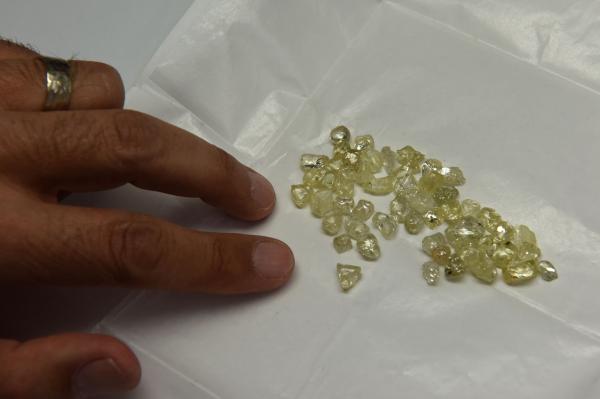To find evidence of water, researchers collected a variety of diamond from mines in Africa, China, Zaire and Sierra Leone and passed X-rays through them.
Scientists have found a type of ice they’ve never seen before trapped inside a diamond formed deep inside our planet.
The unique form of water ice is known as ice-VII. Until now, scientists had never found ice-VII on Earth. The discovery — described this week in the journal Nature — suggests Earth’s deep mantle is hiding more water than previously thought.
Unlike the atoms of other solids, which squeeze together under higher forms of pressure, water’s rearrange themselves into new structures when subjected to different levels of pressure. Normal water ice, ice-I, features a hexagonal structure. The atoms in ice-VII form a cubic shape.
Scientists didn’t set out to find ice-VII, but they were looking for evidence of water of some kind trapped deep inside the planet — 400 miles beneath the surface. It’s impossible to dig that deep, but diamonds can trap clues as to what conditions are like deep in the mantle.
“Water in diamonds is not unknown, but finding this very high pressure form of water ice intact, that was really fortuitous,” George Rossman, a mineralogist at Caltech, told the Los Angeles Times. “That’s what you call discovery.”
Researchers collected a variety of diamonds from mines in Africa, China, Zaire and Sierra Leone and passed X-rays through them. The detracted spectra can reveal unique substances hiding inside.
The data returned by the Advanced Photon Source synchrotron particle accelerator at Argonne National Laboratory outside of Chicago revealed the presence of a unique type of water ice inside one of the diamonds. Scientists re-imaged the diamond and its unusual ice several times to confirm their discovery.
While other minerals trapped inside diamonds can become deformed as they rise to the surface, water tends to remain stable.
“The diamond lattice doesn’t relax much, so the volume of the inclusion remains almost constant whether it’s in the Earth’s mantle or in your hand,” said Oliver Tschauner, a professor of geoscience at the University of Nevada, Las Vegas.
Scientists believe their latest X-ray analysis of diamond inclusions will pave the way for similar discoveries moving forward, each offering new opportunities to study Earth’s deep mantle.












